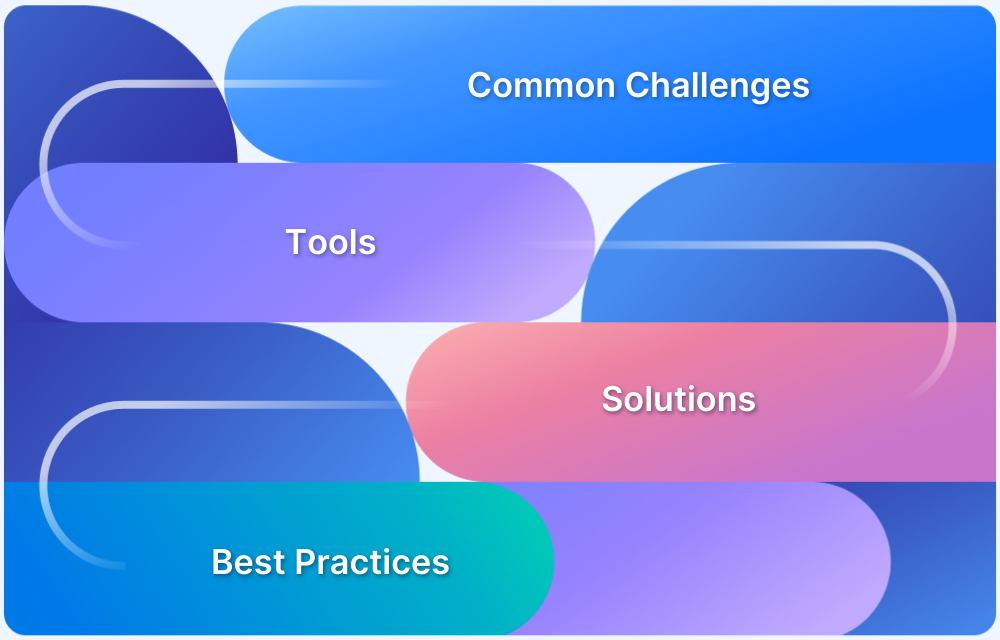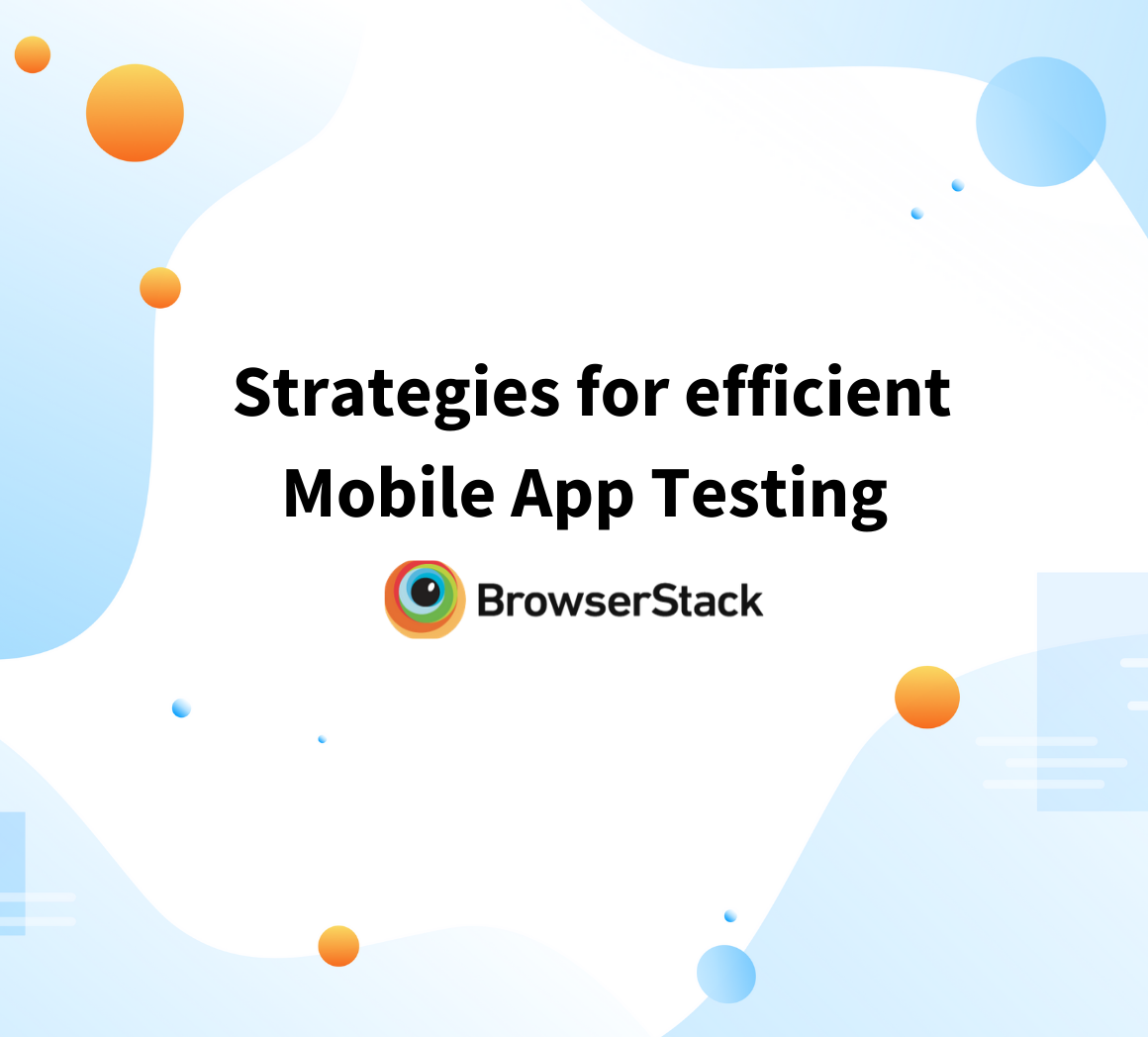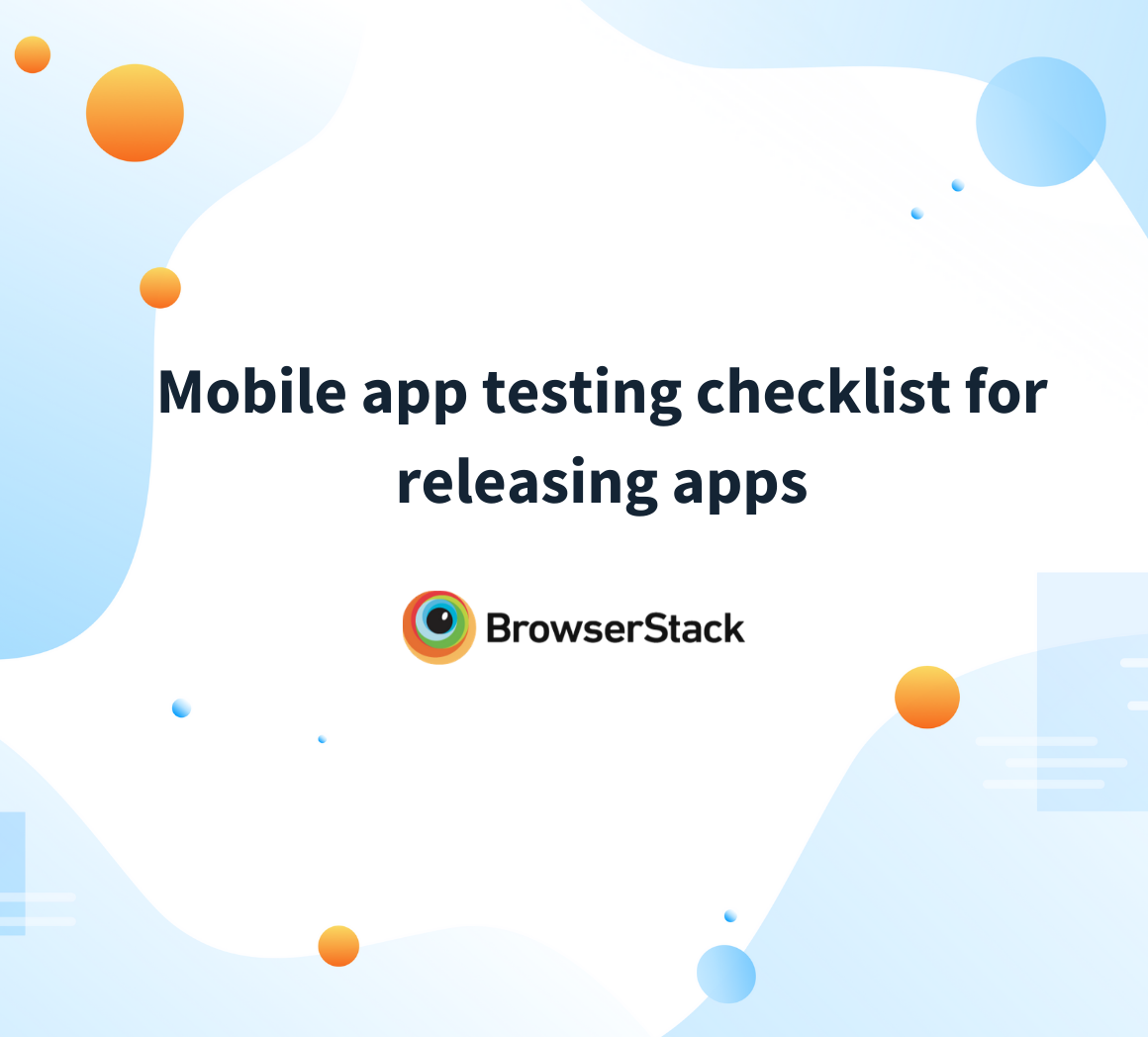Mobile applications have become integral to everyday life, making tasks more convenient and efficient. As the demand for seamless mobile experiences grows, rigorous testing is essential to ensure apps function flawlessly across different devices, platforms, and network conditions.
Well-documented test scenarios ensure progress tracking, issue identification, and validation of complex functionalities while aligning with business goals and enhancing testing efficiency.
This article provides a comprehensive guide to creating mobile app testing scenarios.
Why is Mobile App Testing Important?
Mobile app testing ensures that applications function correctly across different devices, operating systems, and network conditions.
It helps identify and fix issues before users encounter them, leading to a seamless and reliable experience.
- Ensures Compatibility: Validates app performance across various devices, OS versions, and screen sizes.
- Enhances User Experience: Detects usability issues and ensures a smooth, intuitive interface.
- Improves Performance: To optimize app efficiency, identify crashes, slow response times, and resource consumption.
- Strengthens Security: Detects vulnerabilities to protect user data from breaches and cyber threats.
- Reduces Costs: Fixing issues early in development prevents expensive post-release fixes and negative user feedback.
- Boosts Brand Reputation: A well-tested app leads to higher user satisfaction, positive reviews, and increased retention.
Documentation is critical in Testing
Documentation is the key to any Testing and is essential to start any testing. Adequate documentation in any testing project helps the team for a smooth job.
In STLC (software test life cycle) testing team will get the Business Requirement document and Functional documents from the business team. Next, a test plan has to be prepared and should be approved by the business team. A test plan is a testing artifact that describes the testing process.
It has information about the scope of testing, test team details, test environment, test strategy and methodology and estimations, test data requirements, and test tools information. Some projects have a separate test strategy document. It is a high-level document of guidelines and principles of testing.
Learn More: Test Case Prioritization: A Detailed Guide
In Agile Testing, the test plan for each sprint has to be prepared for the given user stories. Once the test plan is finalized and approved, the testing team can design test scenarios.
- The test scenario describes the functionality of the requirement.
- Test cases define the step-by-step procedure.
- Test scenarios are created based on the BSD.
Read More: Agile Testing Metrics Every tester Must Know
RTM (Requirement Traceability Matrix – document mapping user requirements and test scenarios) will be prepared based on BSD and user requirements. Documents created for testing are test plan, RTM, Test scenarios, Test cases, and Test Reports with the actual result.
What is the Difference Between Test Cases and Test Scenarios?
Test cases and test scenarios are both integral parts of software testing, but they serve different purposes and have distinct characteristics:
Test Case
A test case is a detailed description of a specific test that needs to be executed to verify a particular functionality or aspect of the software. It consists of the following components:
- Test case ID: A unique identifier for the test case.
- Test case description: A clear and concise description of the test case, including the input data, expected outcomes, and any preconditions.
- Test steps: The sequence of actions to be performed to execute the test.
- Test data: The specific data values or conditions required for the test case.
- Expected results: The expected outcome or behavior when the test case is executed.
- Actual results: The actual outcome or behavior observed during test execution.
- Pass/Fail status: Indicates whether the test case passed or failed.
Test cases are typically created at a granular level and focus on testing specific functionalities or features. They provide detailed instructions for executing tests and serve as documentation for the testing process.
Test Scenario
A test scenario is a high-level description of a particular functionality or behavior to be tested. It outlines the broader context or situation in which multiple test cases are executed to validate the system. Test scenarios have the following characteristics:
- Scope: Test scenarios cover a broader scope than individual test cases. They encompass multiple related test cases that are grouped together to validate a specific functionality or user flow.
- Business perspective: Test scenarios are often defined from a business or end-user perspective. They focus on real-world scenarios, user interactions, and system behavior.
- Context: Test scenarios provide the context or background for the testing activities. They describe the sequence of steps or events leading to the execution of test cases.
- Test case coverage: Test scenarios outline the test cases that need to be executed to cover the desired functionality or behavior. They serve as a way to organize and prioritize test cases.
In essence, test scenarios define the broader context and purpose of testing, while test cases provide the detailed steps and conditions to execute individual tests. Test scenarios guide the creation of test cases and help ensure adequate coverage of the system’s functionalities or behaviors. They provide a higher-level perspective, while test cases offer a more granular view of the testing process.
Test Scenarios and Test Cases for Mobile Applications
Comprehensive mobile app testing ensures that applications function smoothly across various devices, operating systems, and network conditions.
Test Scenarios and Test Cases for Mobile Applications:
- Functional Testing
- Usability Testing
- Cross-Platform Testing
- Performance Testing
- Security Testing
- Network Testing
- Battery & Resource Consumption Testing
- Compatibility Testing
- Regression Testing
- Localization Testing
- Recoverability Testing
- Installation & Update Testing
Below are key test categories with relevant scenarios and test cases.
1. Functional Testing
Functional testing validates whether the app operates as expected by verifying core features and workflows.
Test Scenarios
Ensuring every feature works as intended prevents usability issues.
- Verify app installation and launching under different conditions.
- Test user authentication, including sign-up, login, and logout.
- Validate form submissions, navigation, and error handling.
- Check app response to interruptions like calls, notifications, and multitasking.
Test Cases
Each function must be tested step-by-step to ensure smooth operation.
- Install and launch the app across multiple OS versions.
- Attempt login with valid and invalid credentials.
- Navigate through various app screens and validate transitions.
- Ensure the app resumes correctly after an interruption.
Learn More: Top 15 Functional Testing Tools and Frameworks
2. Usability Testing
Usability testing assesses the app’s user-friendliness, ensuring an intuitive and smooth experience.
Test Scenarios
- A well-designed interface enhances engagement and usability.
- Check readability, font sizes, and color contrast.
- Validate navigation flow, button placement, and screen responsiveness.
- Test accessibility features like screen readers and high-contrast modes.
- Ensure error messages guide users effectively.
Learn More: Website Usability Testing: A Beginner’s Guide
Test Cases
- Each usability test should confirm ease of interaction and accessibility.
- Confirm UI consistency across different screen sizes and orientations.
- Validate error messages for clarity and guidance.
- Test accessibility support for assistive technologies.
Read More: Usability Testing Tools
3. Cross-Platform Testing
Cross-platform testing ensures the app functions seamlessly across different operating systems and browsers.
Test Scenarios
Users expect a consistent experience across all platforms.
- Verify app behavior on Android, iOS, and Windows.
- Check UI responsiveness across different screen resolutions.
- Ensure the app functions correctly in various mobile browsers.
Test Cases
Every platform variation must be accounted for in testing.
- Run the app on multiple OS versions to confirm stability.
- Validate UI consistency across various devices.
- Test performance in Chrome, Safari, and other browsers.
Read More: Top 20 Cross Platform Testing Tools
4. Performance Testing
Performance testing evaluates the app’s speed, responsiveness, and resource usage under various conditions.
Test Scenarios
Apps must remain fast and stable even under heavy usage.
- Measure load times and response speeds for key actions.
- Assess app performance on different network strengths (WiFi, 3G, 4G, 5G).
- Monitor CPU, memory, and battery consumption.
Test Cases
Performance tests ensure smooth app functionality without lag.
- Measure response time for login, search, and navigation.
- Test performance under weak or fluctuating network conditions.
- Check app stability with extended usage.
Must Read: Top 20 Performance Testing Tools
5. Security Testing
Security testing ensures that the app protects user data from unauthorized access and vulnerabilities.
Test Scenarios
A secure app prevents data breaches and unauthorized use.
- Validate authentication methods, session management, and data encryption.
- Test the app against SQL injection, malware, and hacking attempts.
- Ensure data remains secure across different network conditions.
Test Cases
Every security loophole must be tested to prevent vulnerabilities.
- Attempt multiple failed login attempts to check for account lockout.
- Validate secure data transmission using encryption protocols.
- Simulate security breaches to measure response time.
6. Network Testing
Network testing ensures the app functions properly under different connectivity scenarios.
Test Scenarios
Users rely on apps in varying network conditions.
- Test app behavior when switching between WiFi, 3G, 4G, and 5G.
- Validate app reconnection after a network disruption.
- Monitor data usage under different network settings.
Test Cases
Different network conditions should not affect app performance.
- Check if the app reconnects properly after losing signal.
- Measure data consumption during different activities.
- Ensure push notifications arrive despite network fluctuations.
7. Battery & Resource Consumption Testing
Testing battery and resource consumption ensures the app is optimized for power efficiency.
Test Scenarios
Apps should be efficient without draining device resources.
- Monitor CPU and GPU usage during extended use.
- Check battery drain under normal and heavy app usage.
- Ensure the app switches to power-saving mode when needed.
Test Cases
Battery optimization prevents excessive resource consumption.
- Test battery consumption over 30 minutes of continuous usage.
- Verify app performance in low battery mode.
- Check if the app reduces resource consumption when idle.
8. Compatibility Testing
Compatibility testing ensures that the app works correctly across various hardware and software configurations.
Test Scenarios
Apps must function smoothly across different environments.
- Verify compatibility with multiple OS versions and device types.
- Test screen resolution adaptability and UI scaling.
- Validate app performance on different processors and RAM capacities.
Test Cases
Apps should function consistently across all supported platforms.
- Install and test the app on devices with different screen sizes.
- Check compatibility with older OS versions.
- Test app behavior on different chipset architectures.
9. Regression Testing
Regression testing ensures that new updates do not break existing features.
Test Scenarios
Each update should maintain the app’s stability.
- Verify that core functionalities remain intact after code changes.
- Test integrations with third-party services.
- Check backward compatibility with previous versions.
Read More: Top 20 Regression Testing Tools
Test Cases
New updates should not disrupt existing workflows.
- Test login, search, and checkout features after updates.
- Verify app performance with newly added functionalities.
- Ensure seamless integration with other apps.
Learn More: What to include in a Regression Test Plan?
10. Localization Testing
Localization testing ensures that the app correctly adapts to different languages, currencies, and regional settings.
Test Scenarios
A global app must cater to diverse users.
- Verify text, numerals, and currency symbols for different languages.
- Test date, time, and address formats for different regions.
- Check right-to-left (RTL) text support where applicable.
Test Cases
Localization errors can affect user experience in different regions.
- Test the app’s ability to switch between multiple languages.
- Verify if local payment methods are displayed correctly.
- Check UI alignment for translated text.
Also Read: How to perform Internationalization Testing
11. Recoverability Testing
Recoverability testing ensures that the app can restore functionality after unexpected failures.
Test Scenarios
Apps should be able to recover from crashes and failures.
- Validate app behavior after forced shutdowns.
- Ensure user data is retained after an app reinstall.
- Test app restoration from backup services.
Test Cases
Users should not lose progress due to app failures.
- Reinstall the app and check if user data is restored.
- Simulate an app crash and observe recovery behavior.
- Test restoring in-app purchases after reinstallation.
12. Installation & Update Testing
Installation and update testing verifies that the app can be properly installed, updated, and uninstalled.
Test Scenarios
A seamless installation experience ensures higher user adoption.
- Verify installation on different OS versions.
- Test auto-update functionality.
- Check app behavior after an incomplete update.
Test Cases
App installation and updates should work without issues.
- Install the app from an app store and verify the launch process.
- Test app update from an older version to a new version.
- Attempt uninstallation and ensure all data is removed properly.
Mobile App Test Scenario and Test Case Example
We take the example of a mobile application for online grocery shopping that delivers household items fruits, vegetables, milk products, bakery items, etc.
First, we need to do a sanity test of
- Mobile app installation process
- Application launching and loading of all pages
- The successful purchase of any grocery product.
Then we can move on and start actual testing with designed test scenarios and test cases.
Below is a sample test scenario and the test case for launching the application.
| Test Condition | Test Scenario | Test Case Steps | Expected Result |
|---|---|---|---|
| Application installed on the device. | Verify for the launching and sign up | 1. Click on the application icon on your mobile. 2. Verify page launched has any sign-in/ sign-up option 3. Click on the sign-up option and check if you can enter the details. 4. Enter the details first name, last name, email id, and mobile number. 5. Click on submit button. | 1. The home screen of the application should launch. 2. The home screen should display the sign-up option. 3. A Sign-up page should launch, and the user can enter the details. 4. All the details should remain on the page. 5. A notification appears “Please check your mail and verify the account”. Mail should trigger with the verification code. |
Overcoming Challenges in Mobile App Testing
Challenges are common in any line of work how you deal with it matters. Testing doesn’t have an exemption for this. Here let’s see some of the common challenges in mobile app testing and how you can overcome them.
1. Diverse Mobile Brands
Mobile application testing can be affected based on the mobile device used. Applications have to work as expected on all devices. Application functionality and performance may vary in devices because of the operating system, storage capacity, screen size, etc. To avoid device fragmentation, testing needs to be performed on different mobile devices, and testing on different original devices will be challenging for testers.
BrowserStack’s App Live can overcome this challenge as testers can test mobile apps on real devices like iPhone, Samsung Galaxy, Google Nexus, Pixel, OnePlus, etc without opting for a costly device lab.
2. Unique Operating Systems
An operating system is a key to any mobile device. It is the interface between the device and application programs. Based on the manufacturer, mobile devices have different operating systems like Android, iOS, Microsoft, etc. Each operating system has its features and has different versions based on changes, so testers have to consider all the feasibility and design test scenarios to cover all aspects.
For web-based applications, different browsers will come into the picture where cross-browser testing and cross-device testing also need to be done. Regression testing is required as updates usually happen in operating systems and browsers frequently. So tracking all these changes becomes easier for the testing team.
3. Mobile Application Types (Native, Hybrid)
A mobile application can be a Native, a Web app, or a Hybrid app. Testing for individual applications is different. We cannot test all the mobile applications as mentioned in traditional methodologies. Some applications may store data on mobile devices, and other applications may not. Data communication may be faster for applications storing the data in the device. We need to understand the application behavior before designing the test scenarios.
BrowserStack’s App Live is the manual testing platform for native and hybrid mobile apps while App Automate can be used for Automated testing for native and hybrid mobile apps.
4. Different Test interfaces
Even though testing on real devices is accurate and effective, practically purchasing all devices and testing is expensive. So as an alternative, mobile emulators and simulators are fine for simulating features of mobile devices. Emulators can imitate both hardware and software. whereas simulators can duplicate only software, not the hardware.
However, we cannot test all the real-time scenarios, the application behavior with interruption of call or SMS, low battery conditions, camera access scenarios, and low memory conditions. Sometimes they may lead to false results due to a lack of real-time user interactions.
Again, BrowserStack’s AppLive has the features to test push notifications when AUT ( application under test ) requires access to the camera testers can test and take pictures as a part of their testing.
5. Mobile Network
Mobile networks have a high impact on any mobile application performance. Generally, the testing of mobile applications is in perfect network conditions. But in reality, there will be challenges of network connections, slow network, loss of connection, no signal, interruptions which will impact application performance, data loss, and sometimes applications may hang or crash.
Read More: How to Perform Network Throttling in Chrome
BrowserStack App Live allows you to throttle network speed for testing. Users can test even in slow network conditions and also can test the app functionality and performance under real-world conditions like poor connectivity, loss of network, and changing network speeds of 2G, 3G, and 4G.
Perform Mobile App Testing on Real Devices with BrowserStack
Testing on real devices is crucial because emulators and simulators cannot replicate real-world conditions accurately. Factors like network fluctuations, device-specific behaviors, battery performance, and hardware variations impact user experience.
BrowserStack App Live provides instant access to a vast real device cloud, ensuring comprehensive and reliable testing in real user conditions.
Benefits of Testing on Real Mobile Devices with BrowserStack App Live
- Get accurate results by testing on actual smartphones and tablets.
- Validate app performance across multiple OS versions and screen sizes.
- Test under real network conditions, interruptions, and battery constraints.
- Automate testing with tools like Appium, Espresso, and XCUITest.
Conclusion
Testing mobile apps will have challenges from documentation to execution; designing detailed documents will help in smooth testing, and choosing the right platform makes the tester do effective testing.
BrowserStack provides a well-rounded testing infrastructure for mobile application testing in both manual testing and automation testing scenarios. Testing on real devices without configuring any test environment and a secured cloud environment makes for the testing team’s job well done.







